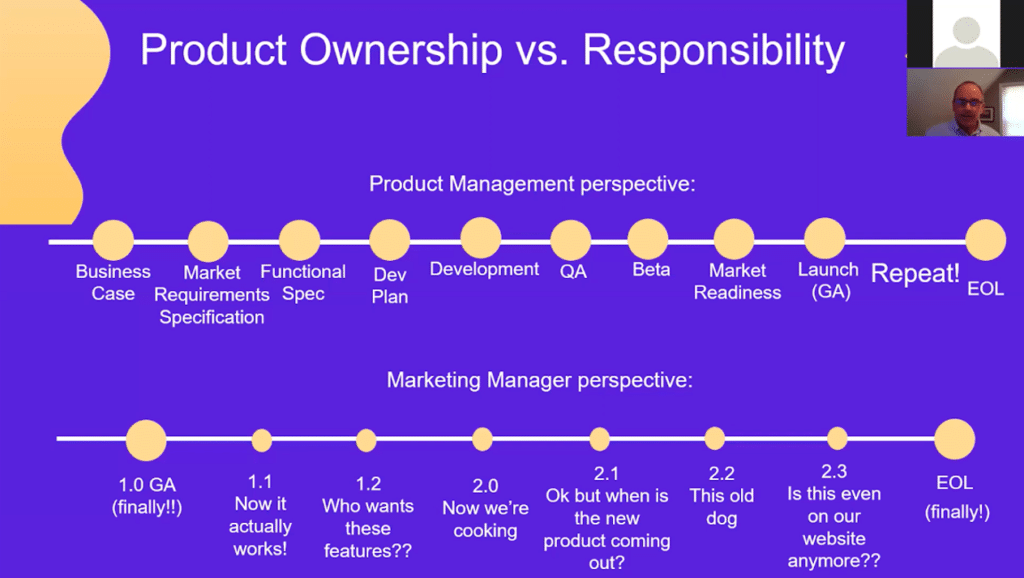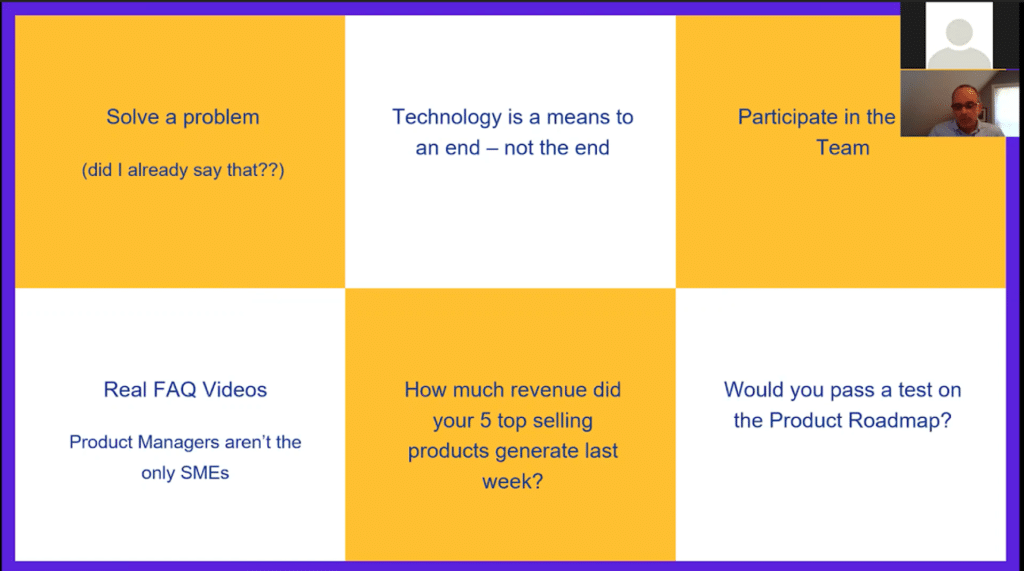Aligning Product Management and Marketing for Go-to-Market Success



Over the course of four days, experts from top cybersecurity companies gathered to deliver talks, panels, and sessions at CyberMarketing Con 2020. The Cybersecurity Marketing Society organized this event in order to give professionals knowledge and advice on a range of topics.
Scott Coleman, the VP of Marketing at Owl Cyber Defense, gave an illuminating session about aligning marketing and management teams by examining areas of responsibility and overlap, voice of the customer vs. voice of the persona, synergies vs. conflicts, commiserating around how far behind engineering is, understanding each team’s weaknesses and leveraging their strengths. He explains how analyzing these areas can help a company build their Go-to-market plan.
Coleman starts out his presentation by talking about his background in the tech industry. He has extensive experience in both product and marketing management, and he says that he’s learned a lot about how different companies have different levels of interactions between both teams.
He labels product managers as ‘business owners’ and marketing managers as ‘success owners’. The product managers own the product line from the corporate perspective and are responsible to every aspect of the product. On the other hand, the marketing managers help define the product and take it to the market with the goal of success.
Different Perspectives
Product management starts out by identifying a need and the market of the proposed product. Why is the product needed? What are the costs? The requirements and specifications of the product become more detailed, and then the product managers develop a plan. The plan is carried out, then the product is tested and prepared for the market. The final step is the launch of the product, and then these steps are repeated in a cycle.
The marketing cycle depends on subsequent releases of the product after new features are added or things are fixed, and the cycle ends at the EOL (end of life) of the product.

Product management focuses on the building, the definition, and the requirements, but the marketing moves it through success.
The Core Team
Coleman relays the story of how he became a part of what is known as a ‘Core Team’ early on in his career as a product manager, and how he has brought that discipline from one company to the next. He describes the Core Team as a group of people that represent different disciplines or stakeholders within the company, such as development, QA, product management, production team, and marketing. The company he works for now, Owl Cyber Defense, was bought out three and a half years ago by a private equity group who didn’t have a product management group or a Core Team, so he helped introduce and add these groups to the company.
With a Core Team, every group within the company is able to be involved along every step of the timeline. This helps build awareness of the process that the product goes through so that everyone is informed and not out of the loop once the product gets to the market.
Understand the Technology
He expresses that knowing the technology behind the market can help close the divide. It gives respect, helps craft appropriate messaging, and gives value to the org. What makes you better than your competition?
As a newly-hired product manager at Dictaphone, he reached out to the engineering team to see if they had any new ideas to incorporate into future products, and one of the developers replied “You’re just a marketing guy, you don’t know what you’re talking about. We’ve been doing this for a long time”. After a couple weeks of working with the development team, the same guy apologized and acknowledged that Coleman actually knew what he was talking about. With his experience in software engineering, he understood their language and was able to communicate with them, and he believes this is an important skill to help close the gap.
The Market vs. Marketing
- Likes don’t equate to revenue.
- Consumers do 70% of their research before even talking to a salesperson. Marketing is that 70%.
- “Sales executes on opportunities. Marketing drives the company forward.”
- Marketers should tell stories and show how to solve problems instead of just talking about the tech. Be creative.
Key Components
- Launch Materials: pricing, discounts, part numbers vs collateral, videos, powerpoint
- Education: sales training vs educating the market
- Awareness: blog, press release vs social, advertising, website
- Product Naming
Takeaways
Think about it: When was the last time your product management and marketing team met?

More about Scott Coleman
Scott Coleman has been the Vice President of Marketing at Owl Cyber Defense since October of 2019, and before that he was the Director and Product Manager for 6 years. Graduating with a Bachelor’s degree in Computer Information Systems at Bentley University, he started out in product development then worked his way into product and marketing management.
Coleman has over 30 years of experience in hi-tech software companies both on the east coast and in Silicon Valley. He has aided in developing software for large enterprise networks for customers like AT&T, Verizon, FBI, Siemens, Microsoft, DoD, Intelligence community, state and local police, Cedar-Sinai Hospital, Cleveland Clinic.

.png)
.png)
.png)